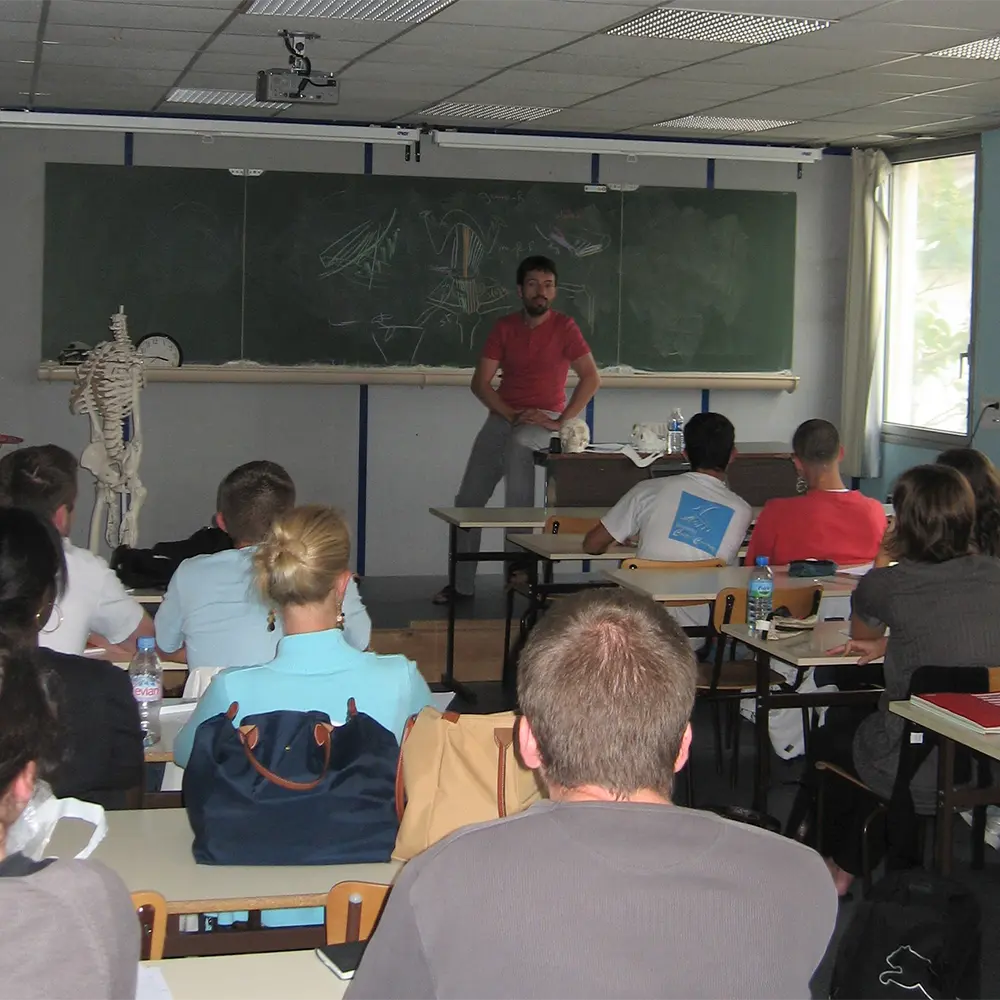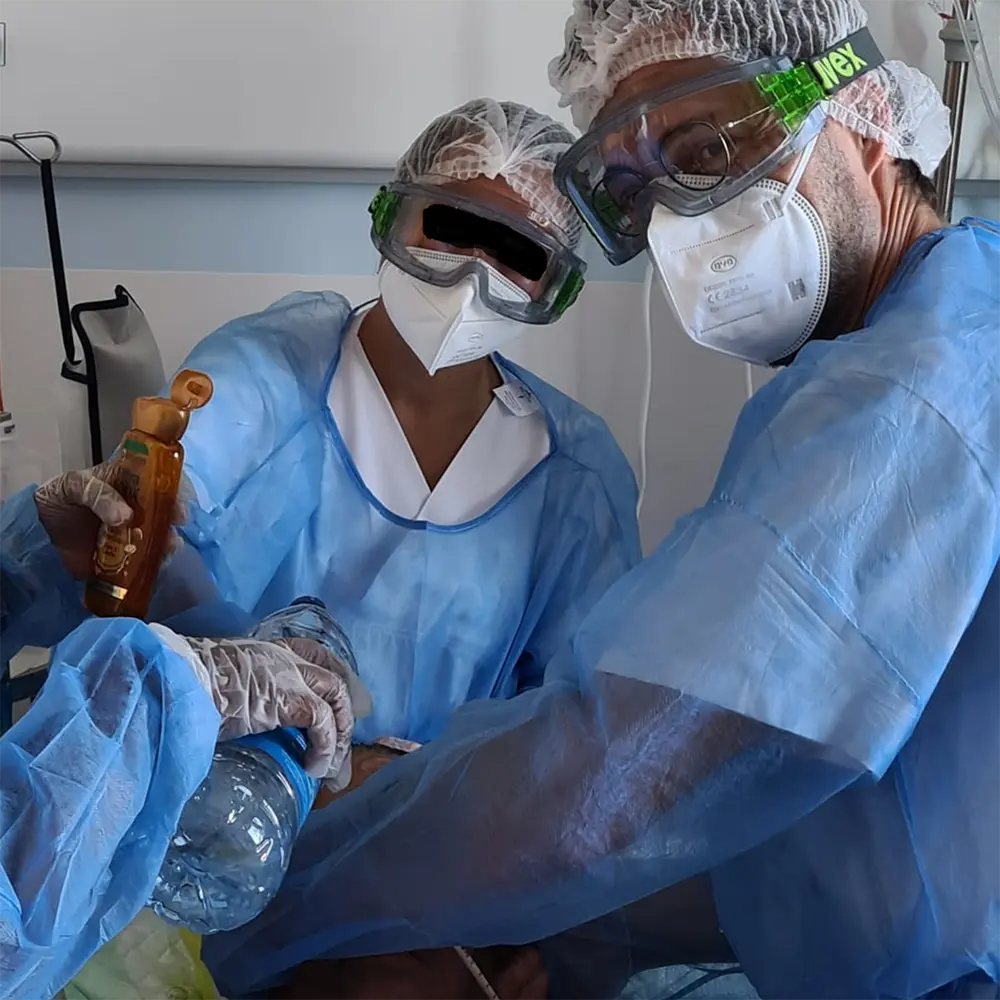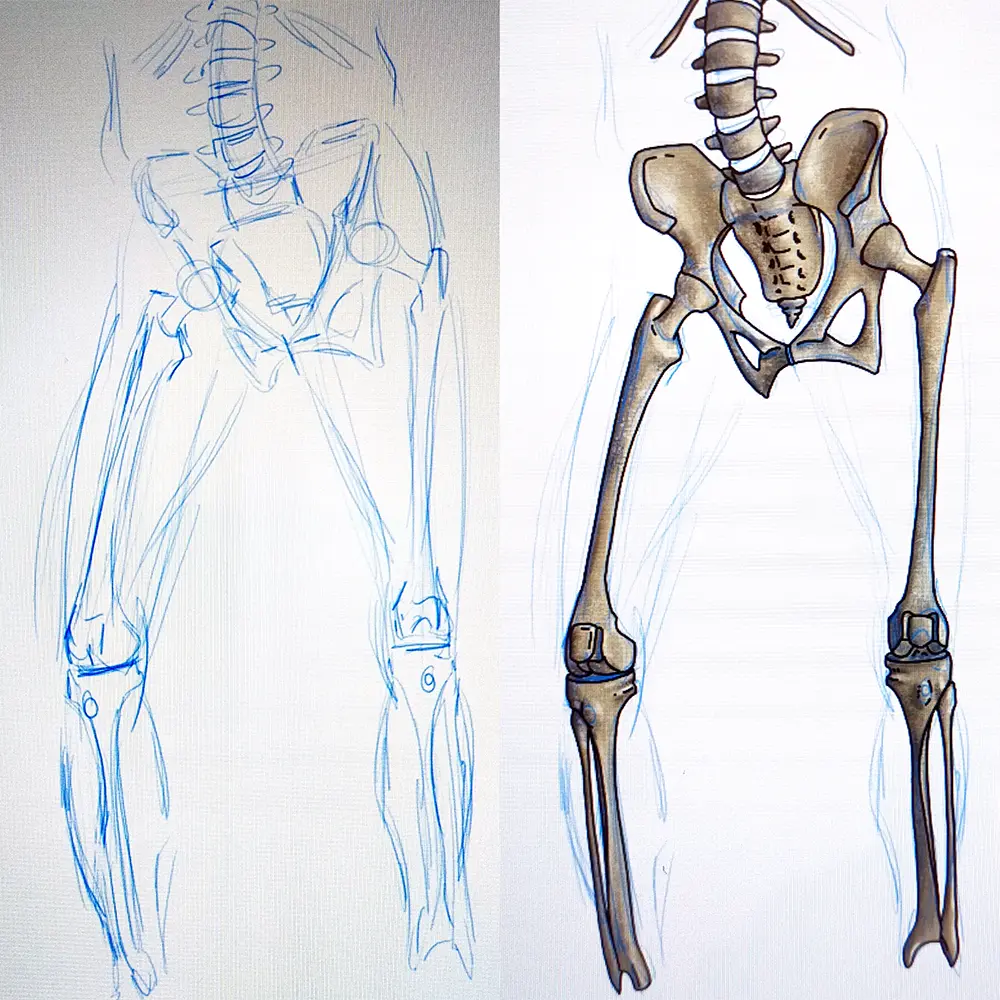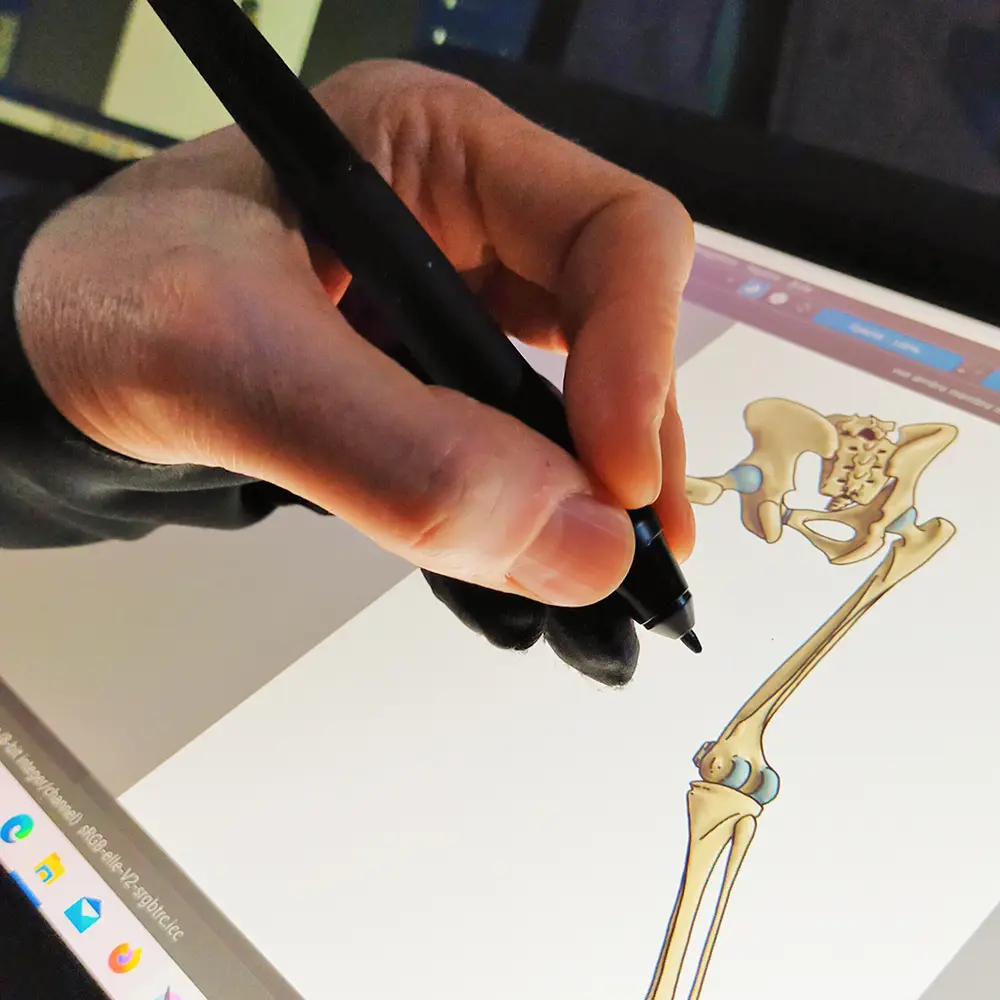Focus on our teacher : Philippe GUIET
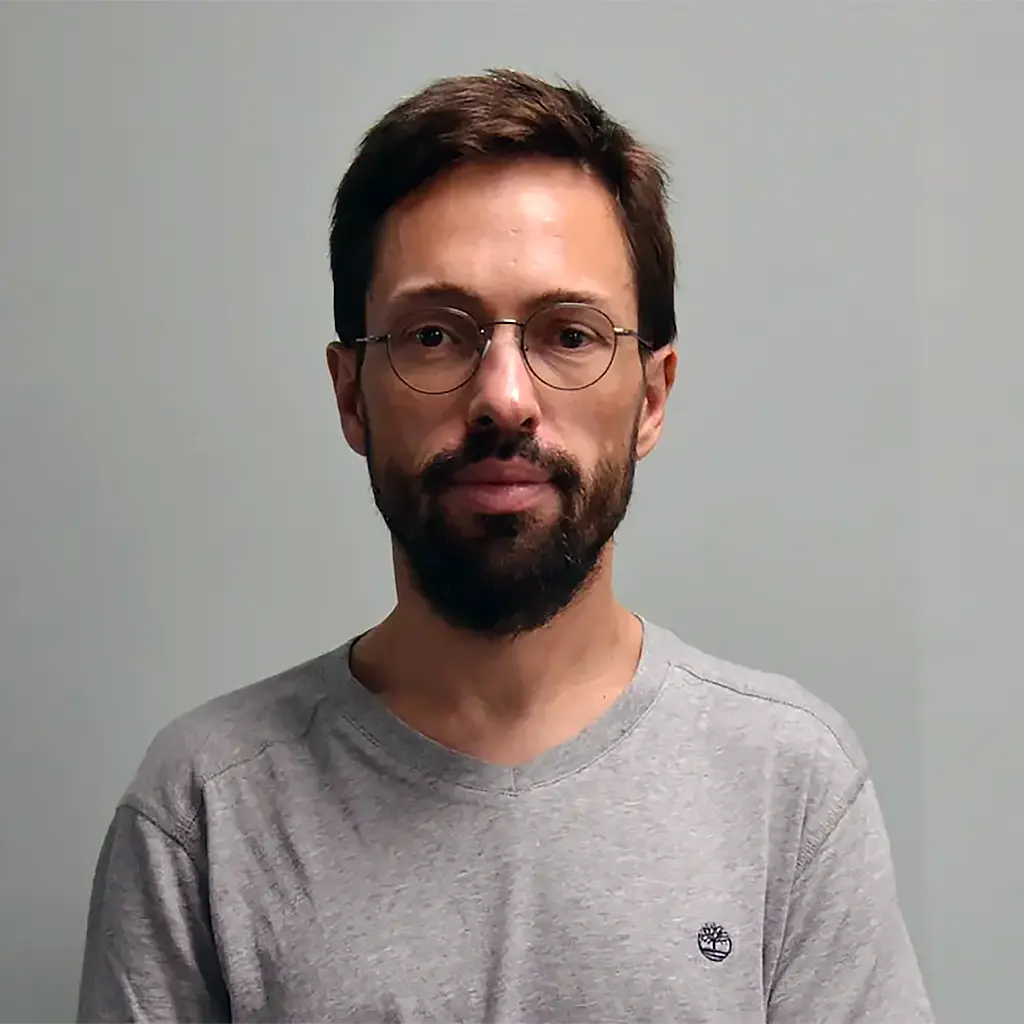
The CEERRF sets up a hot news every month, it is a focus on its teachers, their expertise or one of their works which are shared here and brought to your attention.
After studying at CEERRF, Philippe GUIET became a masseur-physiotherapist in 1995. Trainer in our institute for 23 years, he always remains a hospital practitioner in parallel: rehabilitation center then hospital services, as well as outpatient consultations.
A… as Apprentice, from “Learning” to “Doing-Learning”
He followed this with a course in osteopathy at the Maison de la Thérapie Manuelle, whose six years will guide his technical identity. Working for nearly ten years at the Percy Hospital in Clamart, this dual curriculum achieves a useful technical combination in its approach to musculoskeletal patients. This was followed by post-graduate training in structural and SOT Dejarnette, which changed his approach to patients by facilitating their categorization. He defended a diploma in osteopathy (DO) in 2004. The desire to improve his practices, from the densest to the most flexible structures, will feed on other post-grades: pregnancy, embryology, cranio-spinal, tissue …
He is involved in welcoming trainees on Percy (about 60 trainees per year) by developing a program of weekly topics related to the pathologies encountered on site. This schedule of teaching actions will be completed by one of his colleagues at the time: Arnaud Cérioli. He also became a jury for the state diploma (practical test at the time) from 1998. The CEERRF opened its doors for a first initial training course in 1999.
B… as “Bouger” in french, to move, from “Move” to “Move-forward”
Arriving at the Bégin hospital in Saint Mandé in 2006, he continues his consultations with acute or sub-acute painful outpatients alongside the management of hospitalized patients. He continues to train: DU (university diploma), in anatomy applied to clinical examination and imaging, posturology, neurodynamic therapy, running injuries, MDT McKenzie, clinical reasoning process (MOOC), neck pain (Falla), motivational interviewing, tinnitus, shoulder (Gibson), Mulligan concept, etc….
« I remain impressed by the impact that some learning has on our practices. Osteopathy nourished my exercise in its post-DE construction. The McKenzie approach has profoundly restructured it. Neurodynamics, recent cervical designs, shoulder designs or the Mulligan concept have completed it. But if I take the example of motivational interviewing: it has changed even certain details such as my way of approaching a patient in a hospital bed, managing the door of his room when leaving (offer-provide) or even arranging my stool and the chair of a patient received in consultation! There are elements that build us more than others, and it’s always impressive. Isn’t an “apprenticeship” understood as “to be taken for oneself in weaving” (Cochet) ? »
A master’s degree in educational/teaching sciences between 2006 and 2008 sheds light on the field of teaching as well as that of health education. The role of the patient in his rehabilitation, with his representations and beliefs, is central. The role of student representations and their development is just as important in training (publications). He continues to train on the re-engineering of physiotherapist training and then on the supervision of clinical reasoning (MOOC). He has also taught at ENKRE in Saint Maurice since 2009 and at IFMKEF in Meaux since 2020.
C… Circumnavigation.
« Visiting, apprehending and practicing what initial and continuing training brings gradually shapes a practice in perpetual evolution. This is a great shifting gap that aims to establish a bridge between the construction of a standardized and faithful practice, reproducible and shared, on the one hand; and the irresistible need to build a synthesis integrating all these influences, in a more personal way, on the other hand. But the completion of this construction remains illusory. It never really seems possible to stop during this journey. To believe that we have arrived, to think of grasping a large part of the clinical arcana: and already the mist erases the landscape that we thought we were seizing! Recognizing (in the sense of admitting), or even cultivating, doubt imposes itself throughout the journey. »
3D !
D… Drawing.
« Drawing was part of my life long before I started my physiotherapy studies. Between 1992 and 1994, I had fun making caricatures of our K1 and K2 teachers. Caricatures that the BDE (student office at the physio-school), had produced in calendar. Drawing makes it easy to support understanding for learning our trade. That said, it is better to draw live to illuminate its construction in front of the students, rather than a superb image immediately displayed finalized on a slideshow. »
D… Didactic.
« If we teach someone something’, we train someone for something’ (Reboul). The three relationships of the didactic triangle are necessary to be explored: the learning relationship between trained and knowledge, the pedagogical relationship between learner and teacher and the didactic relationship between knowledge and teacher.
The construction of representations of a therapeutic strategy or a phenomenon (mechanical or other…) in everyone’s head is exciting. And if the live composed drawing is a plus for those who have a visual design, it has its limits for others. And this is where the didactic game is captivating: what words, what comparisons, what pathways to the learner’s brain (image, sentence, mimes, model making, etc.)? In short, this is, for me, where lies what fascinates me in our job as a trainer.
Learning requires a transfer of the knowledge studied: with a transport and transformation of these by the trainees (Genthon). The knowledge taught does not necessarily follow the path of the researcher (depersonalization) and must sometimes be extracted from its epistemological environment to be desynthesized to allow its reconstruction (Johsua & Dupin).
It remains for these elements of knowledge to find a coherent place to survive within the corpus of each, in ecological competition with other learnings against which they will be in dominance, cooperation, avoidance, abandonment (Rajoson). The biodegradable property of new knowledge prevents the risk of construction of new dogmas, ensuring possible future deconstruction and recycling in the development and evolution of the models of each future physiotherapist (allosteric model of learning, Giordan). This transposition of knowledge, know-how, and interpersonal skills so that they become intimate and specific experiences for each one is proving to be an exciting challenge.»
D… Doubt.
« Knowing how to develop your knowledge and practices by integrating evidence is crucial. It is equally important to be able to recognize uncertainty as it arises in practice. Awakening future professionals to doubt seems to me a necessity to leave room for humility in their professional posture, and perhaps to arouse the modesty necessary for the exercise of a profession that aims to guide the human on paths of his rehabilitation. »
- COCHET Hervé. Apprentissage : à prendre en soi pour en tissage (Journées internationales sur la motricité cérébrale, Le Kremlin-Bicêtre, 1998). La Motricité cérébrale n° 20. 1999 ; Paris : Masson.
- GUIET Philippe. Contribution à la compréhension de la construction de représentations mentales anatomiques en formation initiale de masso-kinésithérapie. Kinésithér rev. 101. 2010 ; Issy-Les-Moulineaux : Elsevier-Masson.
- GUIET Philippe. Spécificité des obstacles d’apprentissage du raisonnement clinique autour de la marche en formation initiale de masso-kinésithérapie et contribution didactique. Kinésithér rev. 117. 2011 ; Issy-Les-Moulineaux : Elsevier-Masson.
- REBOUL Olivier. La philosophie de l’éducation. 1989 ; Paris : Presses Universitaires de France, Coll. Que sais-je ?
- GENTHON Michèle. Lectures plurielles de l’apprentissage. En question : les cahiers de l’année 1996 (cahier n° 5). 1996 ;Aix-En-Provence : Université de Provence Aix-Marseille 1.
- JOHSUA Samuel, DUPIN Jean-Jacques. Introduction à la didactique des sciences et des mathématiques. 1993 ; Paris : Presses Universitaires de France.
- RAJOSON Landy. L’analyse écologique des conditions et des contraintes dans l’étude des phénomènes de transposition didactique : étude de 5 cas. 1988 ; Université Aix-Marseille 2 : thèse.
- GIORDAN André. Apprendre. 1998 ; Paris : Belin.

